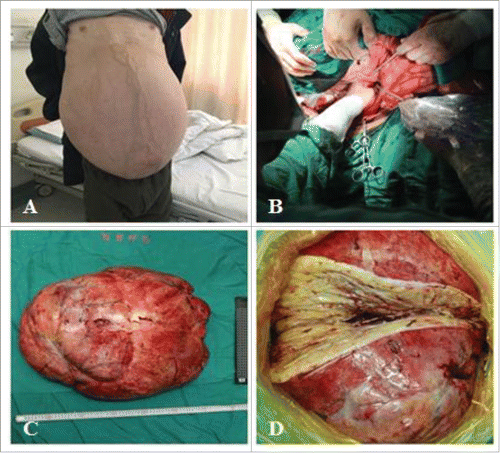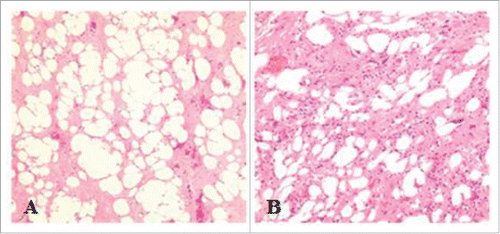Figures & data
Figure 1. A: Appearance of the retroperitoneal liposarcoma as a giant mass. B: At surgery, well-encapsulated tumor and its exact supplying vessels were found. C: Gross appearance of resected tumor, measuring 65 × 45 × 30 cm and weighting 31 kg. D: The cut section of the specimen, showing a homogenous, yellow look.

Figure 2. A and B: Abdominal computed tomography (CT) shows a heterogeneous retroperitoneal mass occupying the entire abdominal cavity, with stomach being pushed aside (red arrow). C and D: The 3-month follow-up CT scan, with the normal stomach (red arrow).

Figure 3. Histopathologic findings. A (original magnification, × 40; hematoxylin and eosin staining) and B (original magnification, × 100; hematoxylin and eosin staining) views demonstrate a well-differentiated liposarcoma.

Table 1. Clinical features, preoperative evaluation, type of therapeutic approach, histopathologic characteristics at diagnosis, follow-up and clinical outcomes of 14 patients with giant RPLS.
